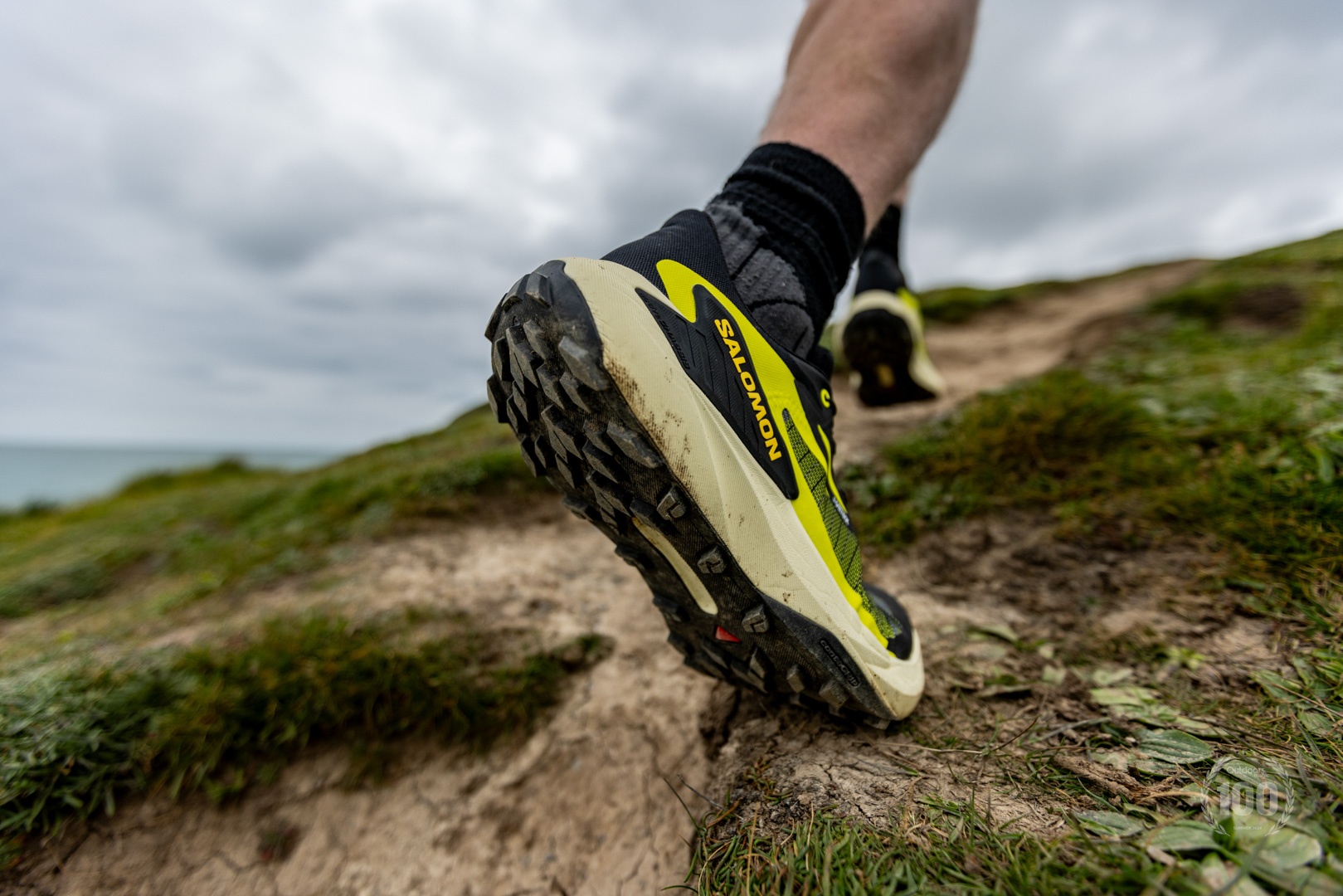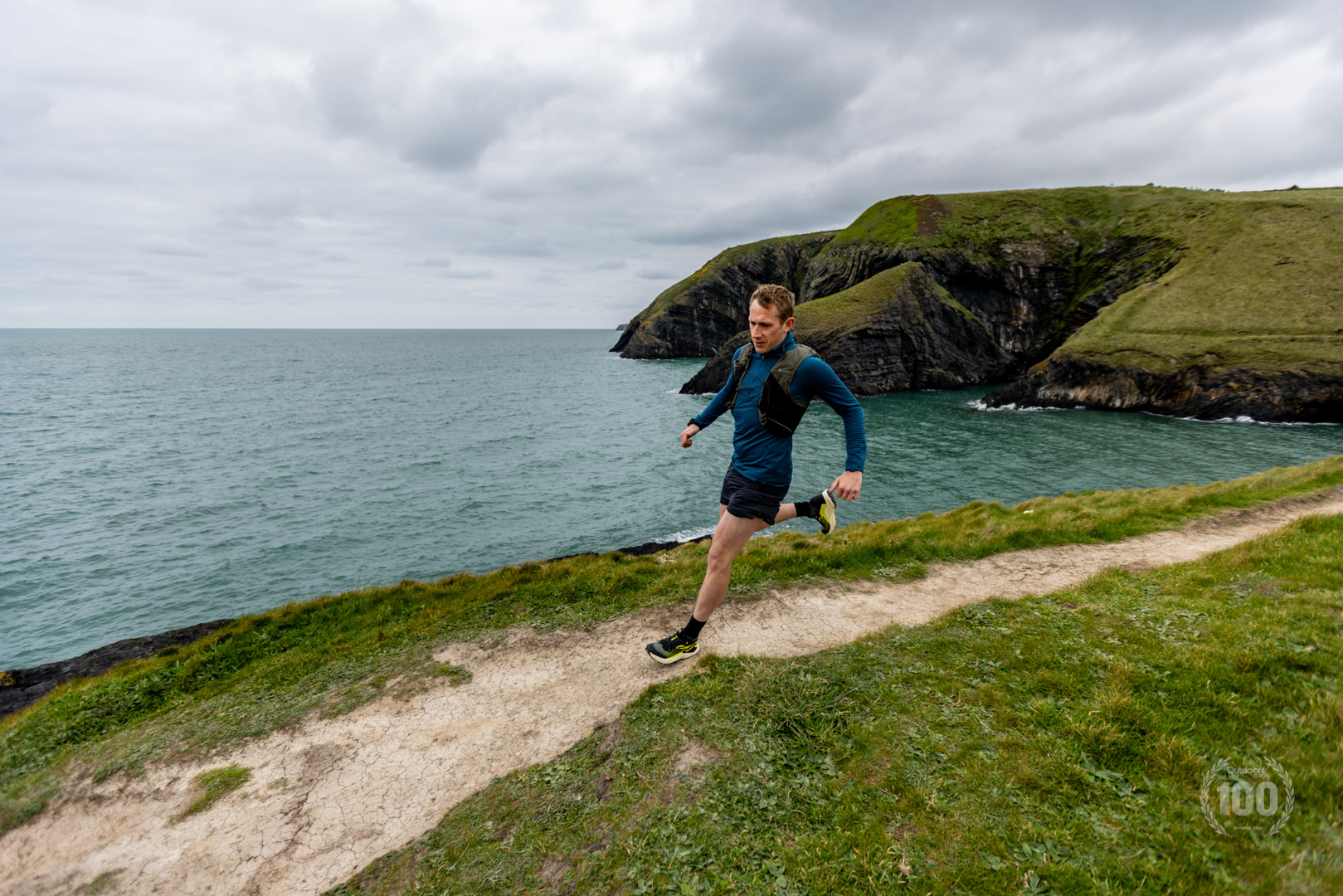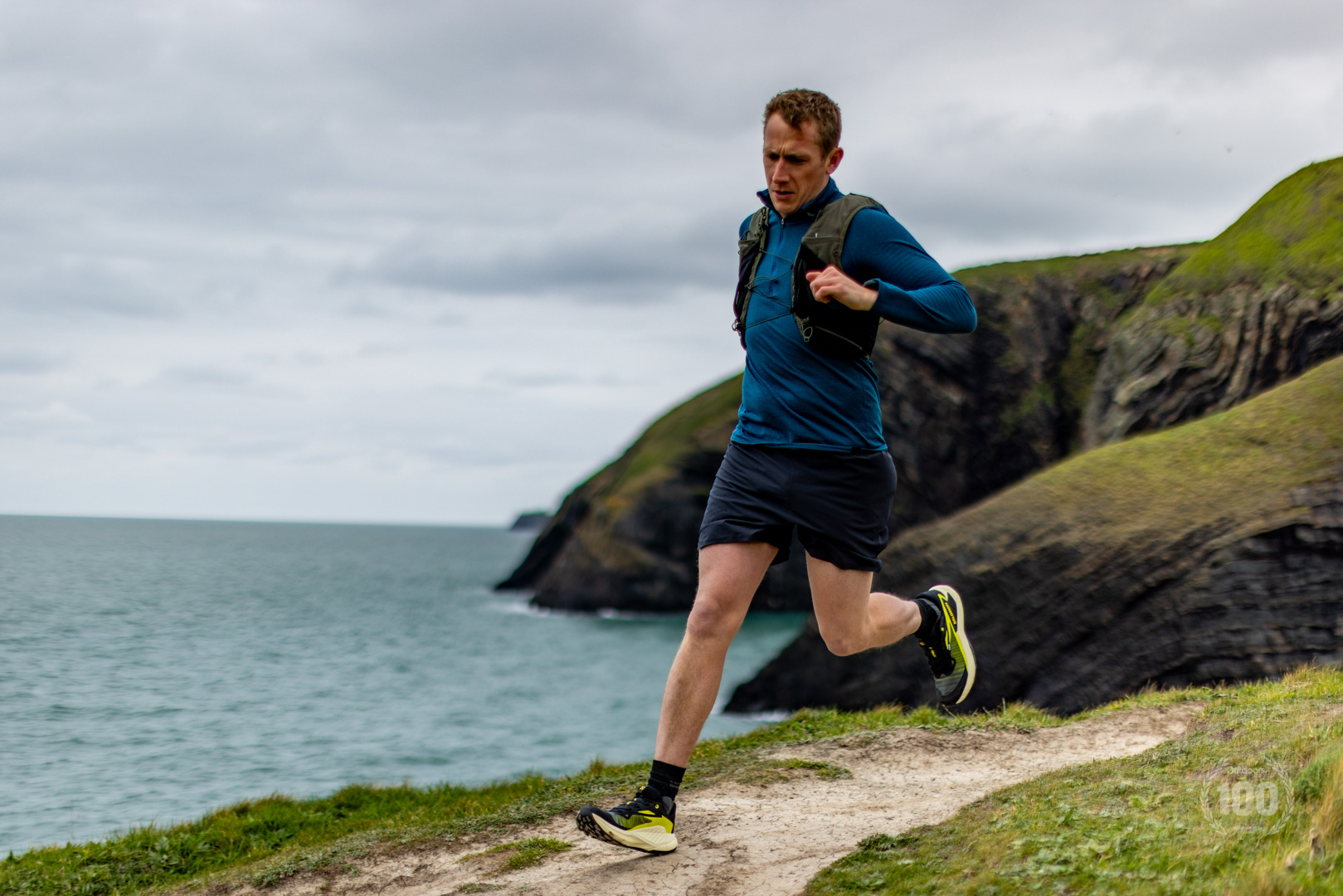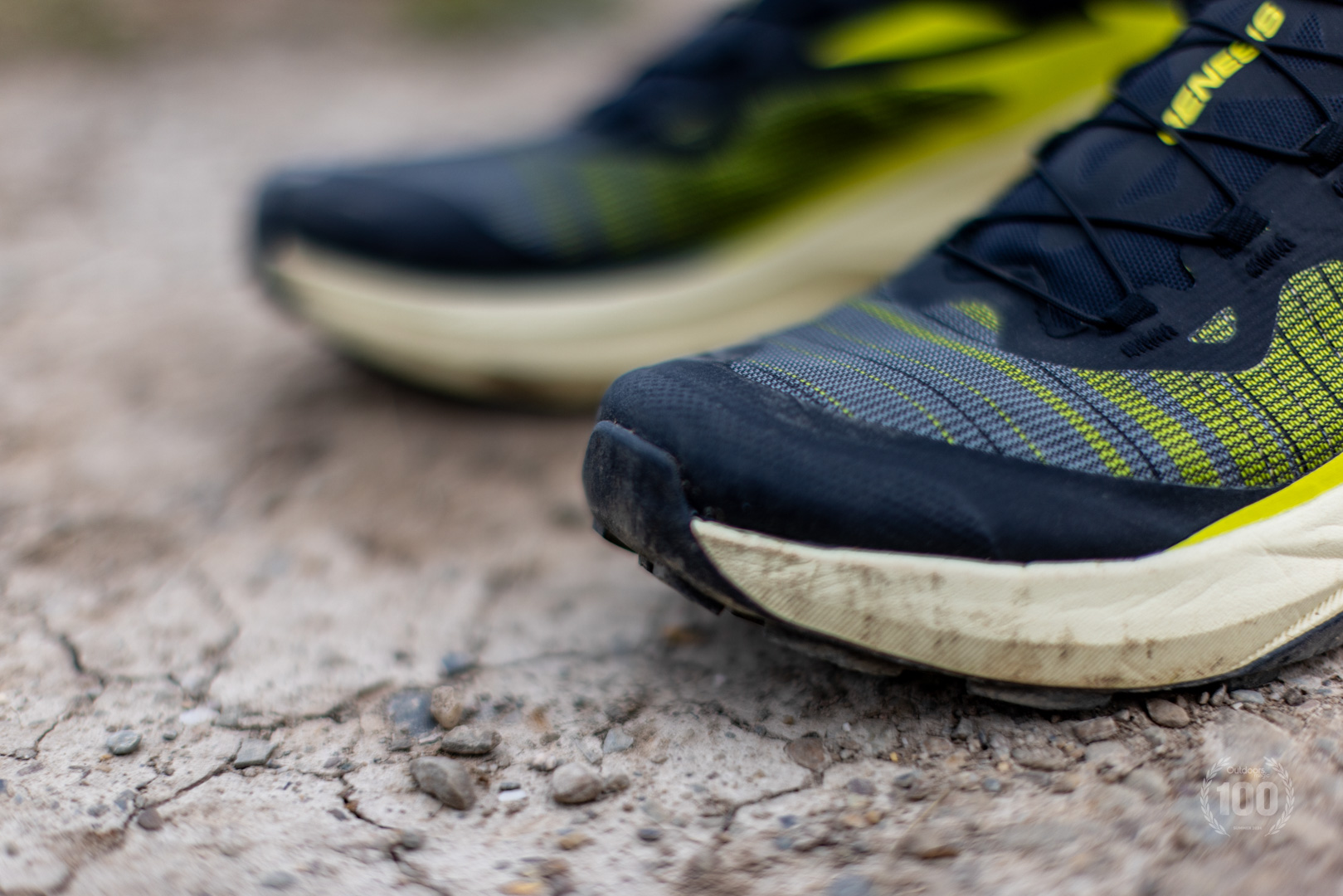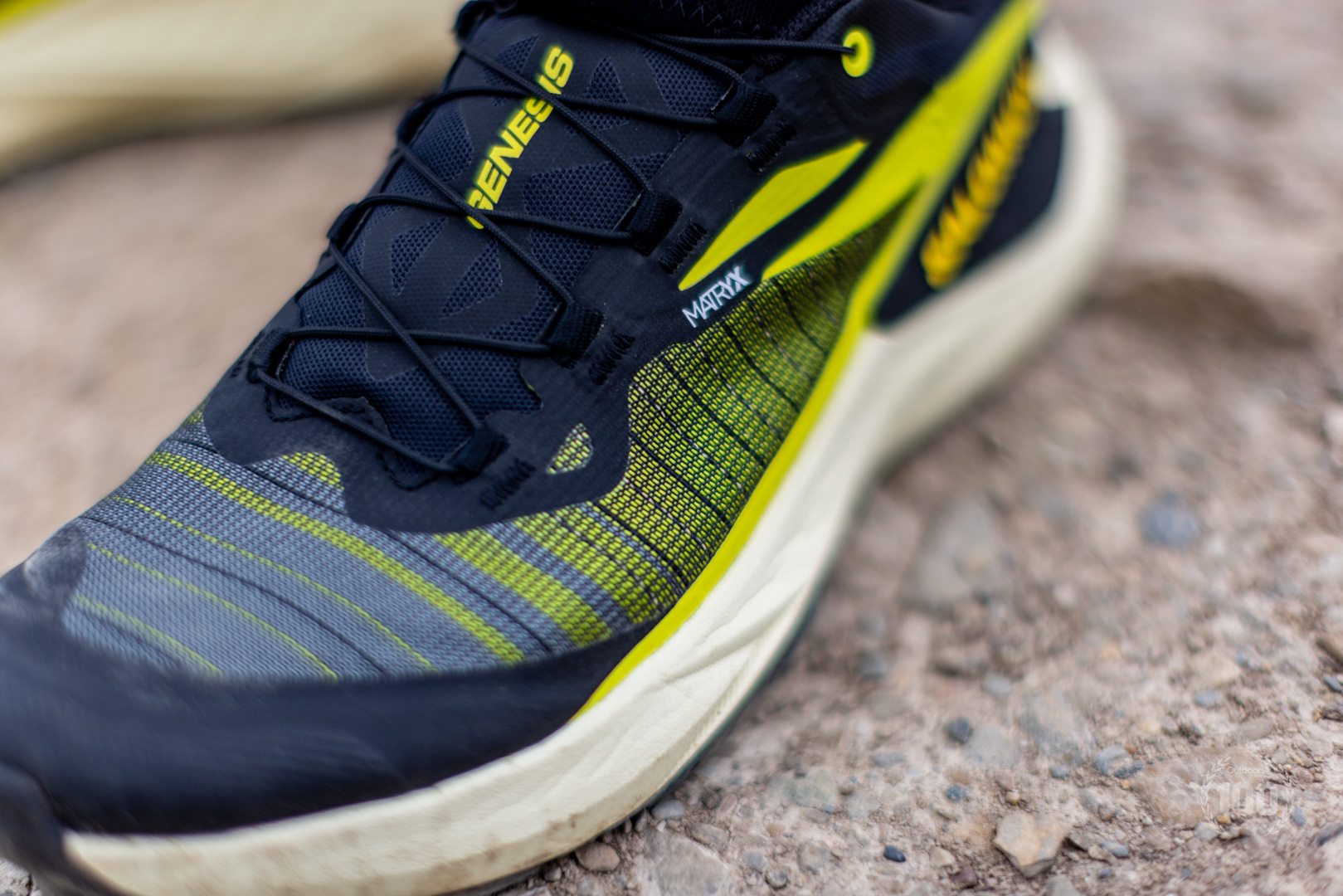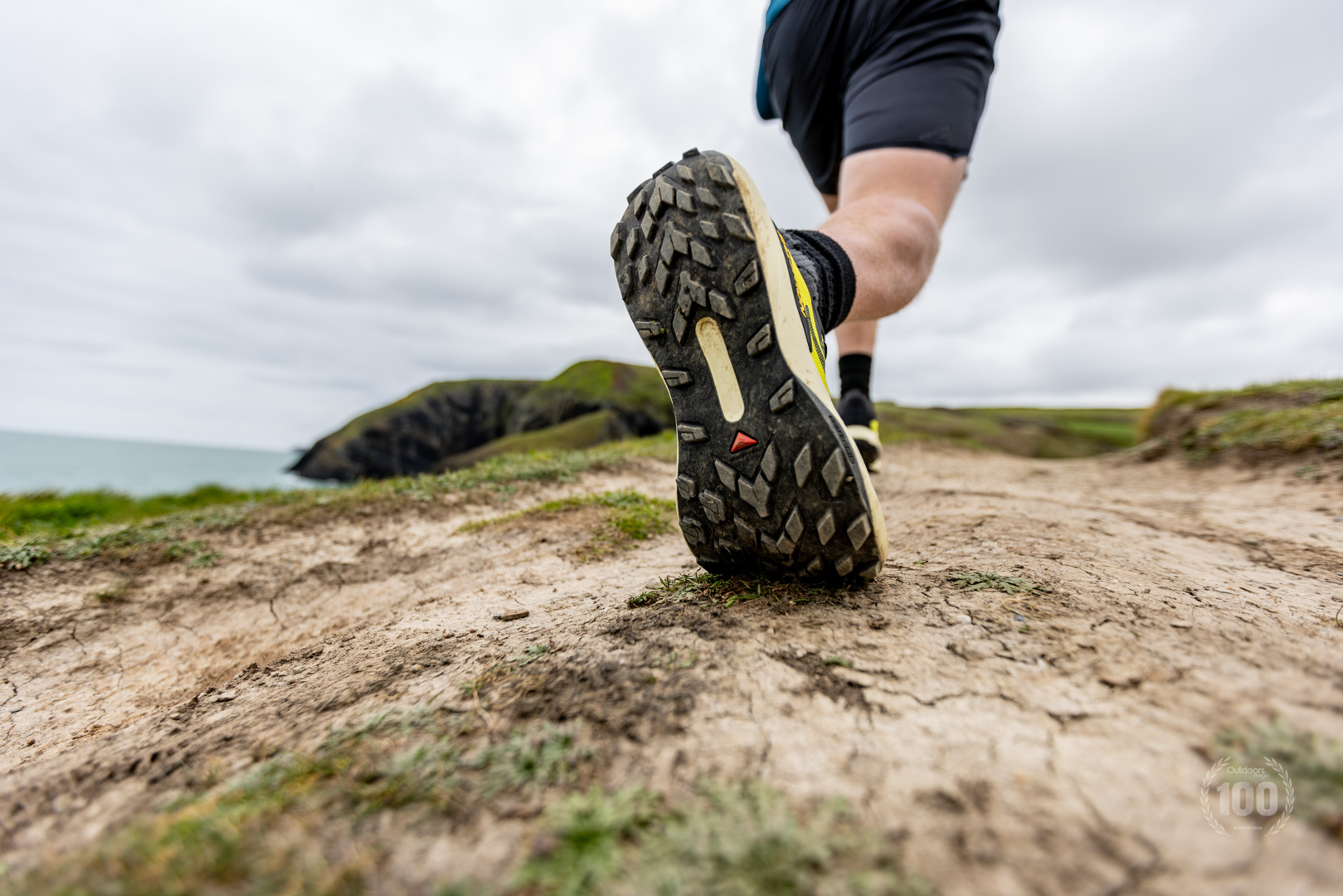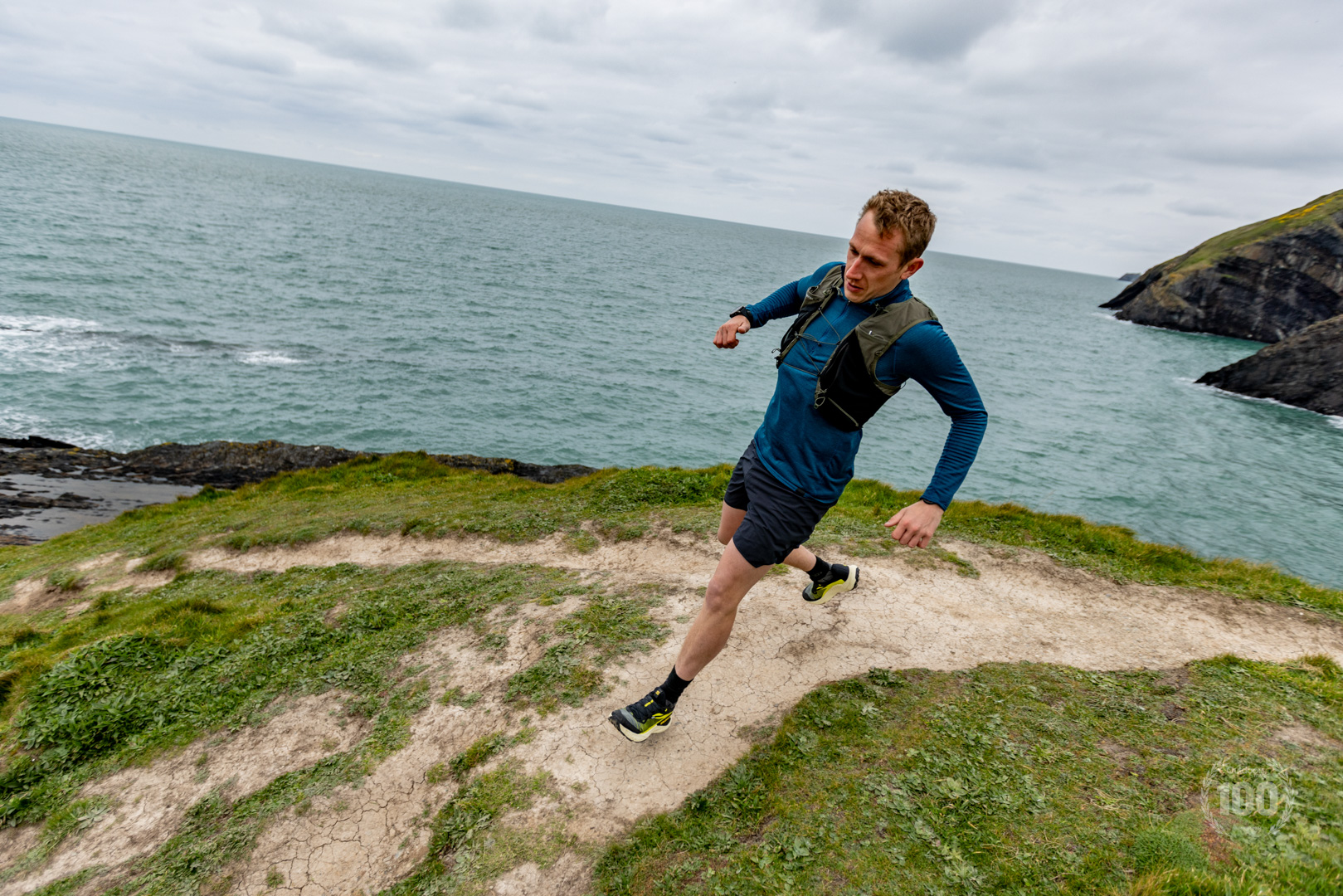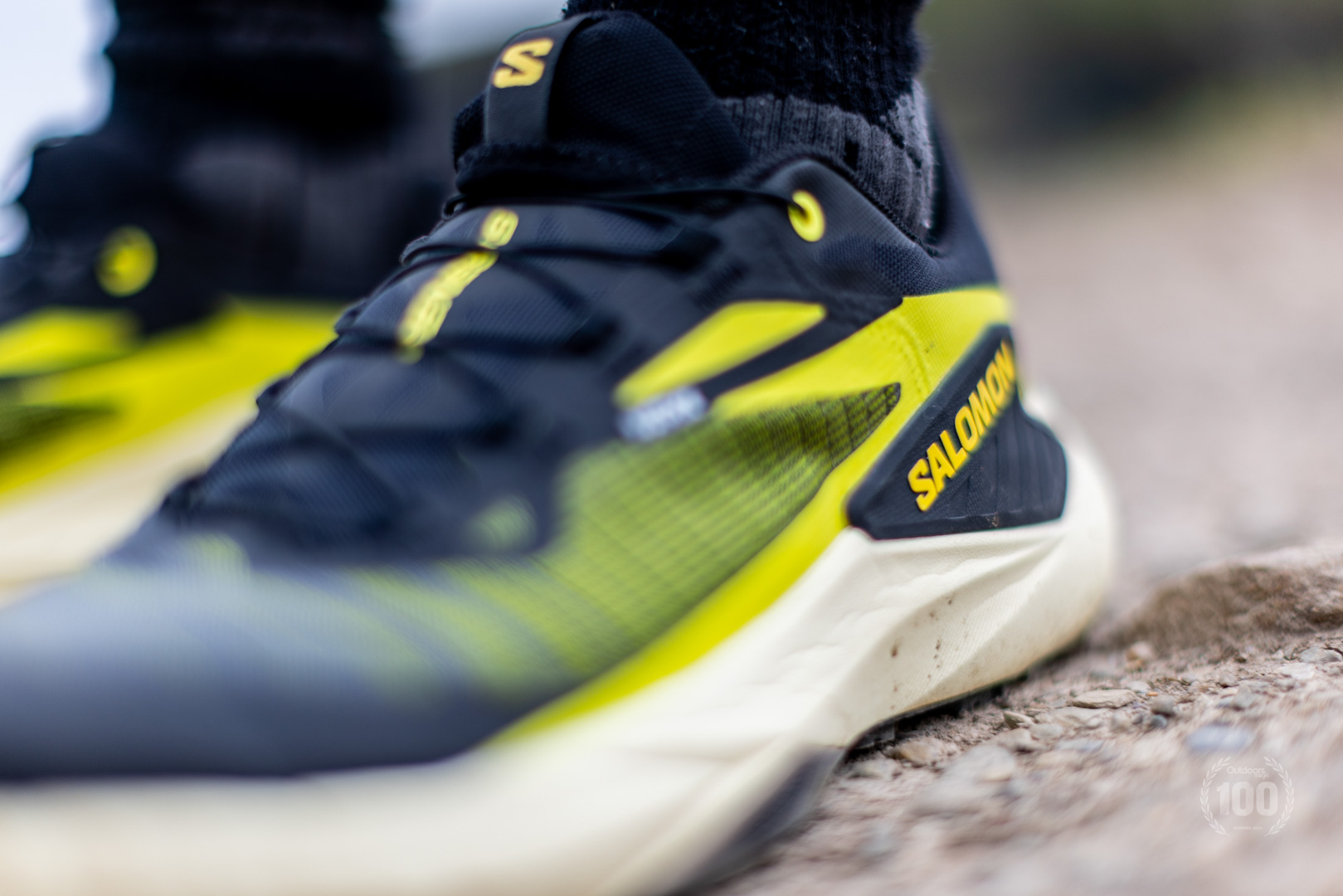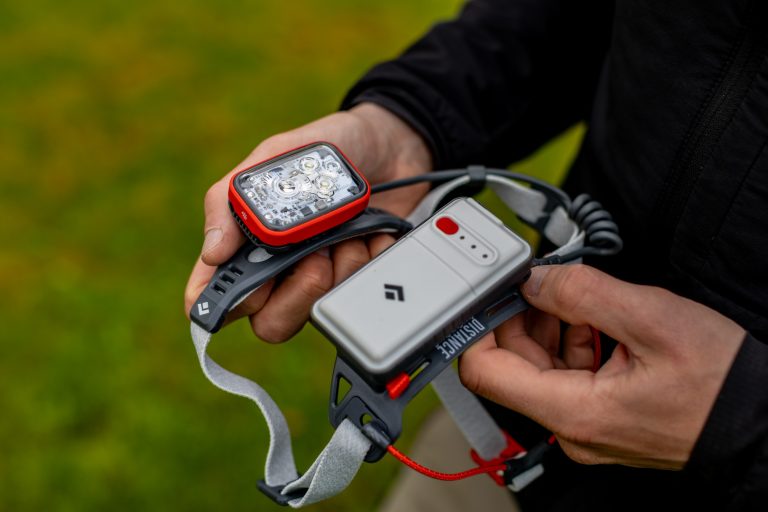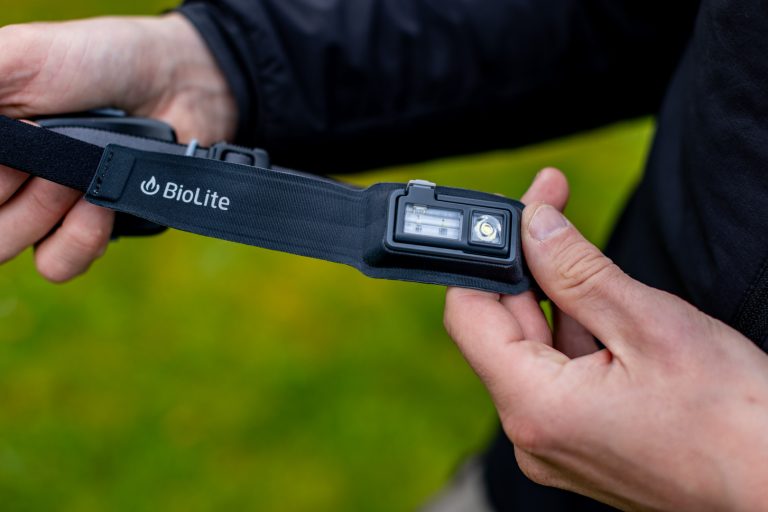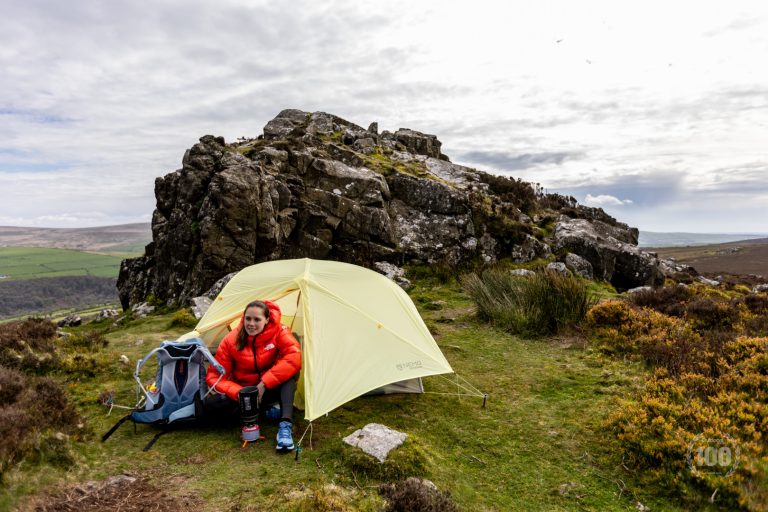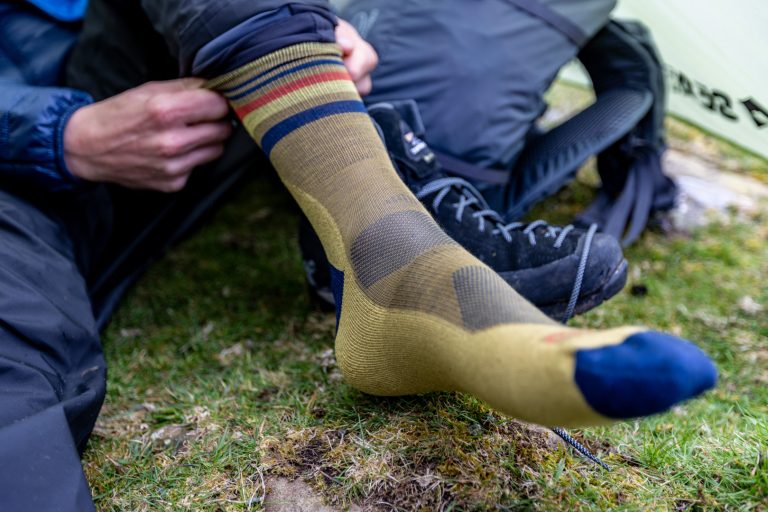The outsole uses Salomon’s popular Contagrip All Terrain rubber compound and 4.5mm lugs. This, to the touch, feels very soft and flexible – though not particularly durable.
All in all the sole unit has a very slight rocker shape to it with most of the curvature at the toe end of the shoe.
The Upper Construction
The weaved Matryx upper is very flexible and, while it does feel quite thin, you do get the sense that it’s some tough stuff – the Kevlar content certainly helps there. The toe is stiffened up a touch and has a TPU reinforcement.

The tongue is quite broad and has mid range levels of padding. A very thin mesh links the tongue up with the upper on either side to keep out debris.
Up top you have Salomon’s QuickLacing system. This gives an even pull in, holds reliably and the excess lacing can be tucked away neatly in a little pocket at the top of the tongue.
Salomon Genesis Performance
I found these trail running shoes to be incredibly comfortable and ready to roll right out of the box. Having spent some weeks running in On’s Cloud Ultra shoes, these felt luxuriously comfy and cushioned in comparison and my toes felt relieved to be given a little bit of extra space.

I’m a UK 10 with nearly every pair of shoes I wear and the size 10 Genesis fitted me like a glove. I’d describe the toe as quite neutral. It’s not narrow nor wide, while I’ve had the sense that there’s a little bit of space for foot splay over long distances.
The cushioning is just about mid level and there’s reliable protection underfoot. I particularly liked that the slightly wide platform at the ball of the foot kept my toes protected on uneven rocky surfaces.
There’s quite a lot of springy flex at the midfoot while there’s just a touch of flexion laterally. Generally, I’ve found it to be a very stable shoe to run in – it’s certainly heaps more stable than the On Cloud Ultra I’d been running in before it.

As for the grip, I’ve been really impressed in that regard. The compound felt absolutely made for the rocky trails of Snowdonia while 4.5mm lugs are always going to give you decent levels of traction on mud or dusty stuff. After a month of running in these, I’ve found the outsole has held up OK though the lugs do appear to be wearing down a bit. I suspect that extended road or gravel use will to take its toll. The upper, on the other hand, has held up really well.
The Salomon Genesis weighs 276g per shoe. That’s not super light but it’s still light – and the shoe does feel agile. In fact, I was really surprised how light the Genesis was when I first tried it on as I think that chunky-looking sole makes it look much heavier than it actually is.
The Competition
In terms of weight, style and design, the Genesis is very similar to the Saucony Peregrine series. I’ve definitely preferred using the Genesis though, as I’ve found it to be much more protective underfoot, particularly at the toes. The Quicklace system on the Genesis is also much more reliable than the standard flat laces of the Saucony Peregrine.
Another close competitor would be the Arc’teryx Norvan LD. Again, I think the Genesis has the edge, particularly in regards to grip and comfort.

Verdict
I’ve been really impressed by this shoe. I love the comfort, the grip and I’m hoping it’s going to have a good few hundred miles from the sole. I’m pretty confident the upper should have some staying power. I’ll try and come back to update this to report back there. If we’ve gone beyond August, don’t hesitate to nudge me via email for an update!
I’d definitely be happy to wear these on big ultra runs; the kind where I’d want something comfortable over long distances that’s also able to cope with trail variety too. I’ve found my new running workhorse, I reckon.
What I liked: comfort, lacing, grip, versatility
What I didn’t like: I do have some suspicions about the robustness of the outsole
